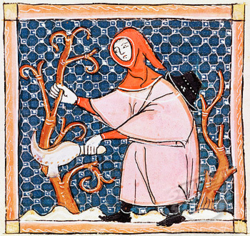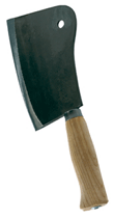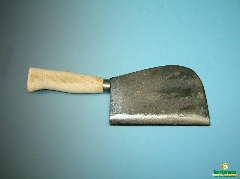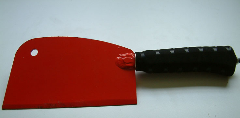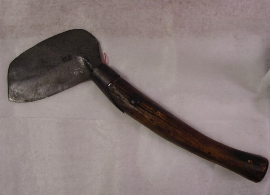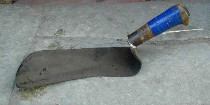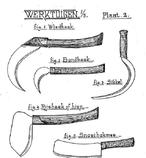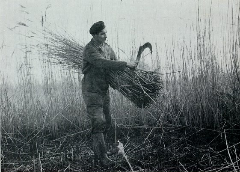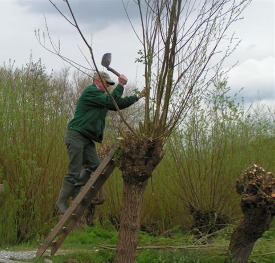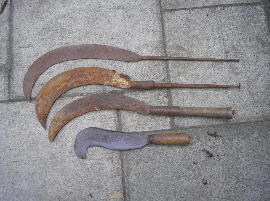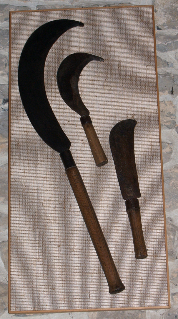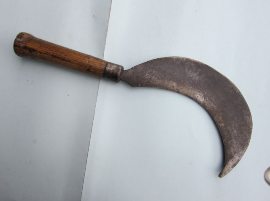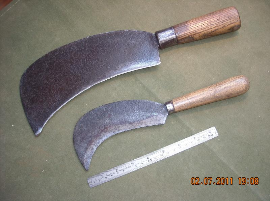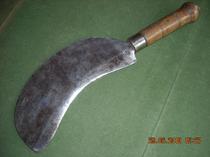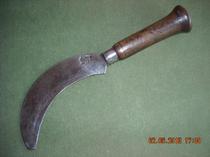Hiepen en snoeimes
The billhooks of the Netherlands and Belgium are similar to those from the neighbouring countries of Germany and France, but have distinguishing features that allow them to be placed appropriately. Dutch billhooks tend to have caulked handles, similar to those in the UK, and a straight blade; whereas Belgian billhooks usually have round handles like those from France and Germany, and often have a beak that is not sharpened.
In francophone regions they are often known as a 'serpe' or a 'courbet' whereas in Flemish regions the terms 'snoeimes, kapmes, hakmes or hiep (also heep)' are more commonly used...
In the Netherlands the terms 'hakmes & kapmes' are interchangeble with 'vleemes' (meat cleaver, which usually also have a straight blade - the latter usually have a squarer end and a hole for hanging, but this not unique, some 'snoeimes' are very similar). The term 'hakbijl' is also used, which has similar entymological derivation as the English word 'billhook'...
Possibly a Dutch 'oogstkapmes' this type of cranked billhook is more commonly used for harvesting osiers, than the 'rijshaak', above. Also known as a 'serpe à osier', his type is found in northern France as well as in Belgium and the Netherlands..
These long bladed two-handed billhooks are from southern Belgium, near the French border. The bottom tool is a normal French 'serpe' with a 9" (225mm) blade for comparison. Their actual usage is still to be determined... One is stamped 'Seillieur à Fagnoles' another (not shown here) is stamped 'Bucheron, Fosse'...
This image, sent to me by Jef Gielen from the Netherlands shows similar a 'hiep' to the above on display in a museum in the Ardennes.. The smaller one is typical of those from Belgium, with a small, thick and un-sharpened beak. The one to the lower right appears to be similar in shape to a French 'serpe de genie', a military billhook, commonly used in WW1 and often found in old trenches on battlefield sites. It is possible this is a relic from that period - they turn up regularly on ebay.fr - both as 'fouilles' found by metal-detectors and as pristine tools (date stamped as on English military billhooks).... The Battle of the Ardennes, between the Germans and the French, was one of the opening battles of WW1, taking place 21 to 23 August 1914. ..
